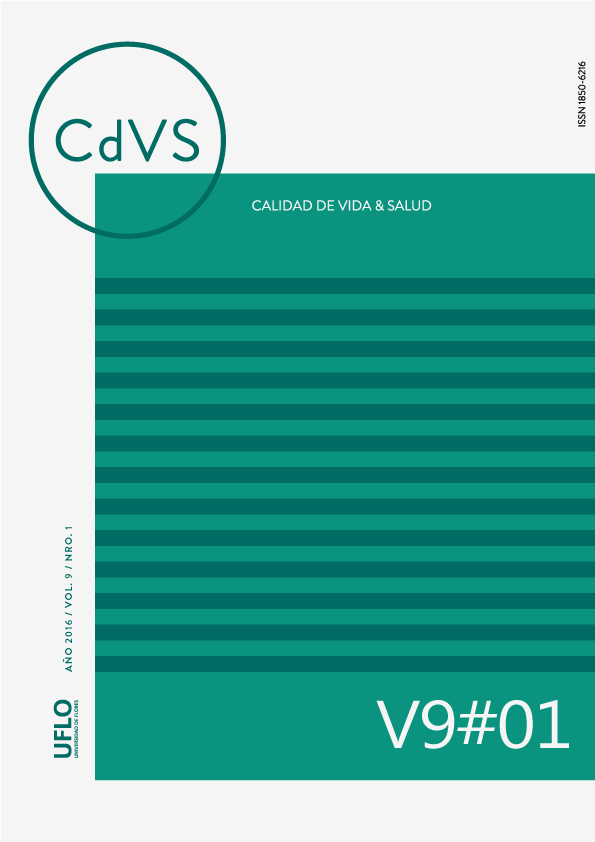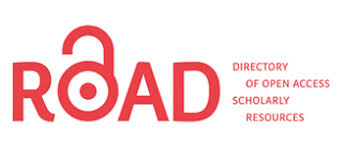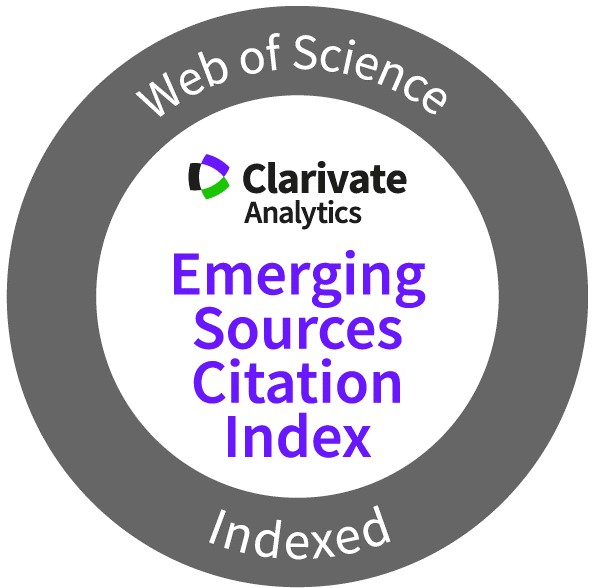La influencia del bullying en la autoestima de los adolescentes
Palabras clave:
autoestima, bullying, adolescencia.Resumen
El acoso escolar o bullying es una situación tremendamente difícil de vivir tanto para las víctimas como para las personas observadoras. Es conocido que puede tener serias consecuencias negativas como una baja autoestima o ansiedad y estrés, que se arrastran hasta la edad adulta. Por ello es interesante conocer en detalle de qué manera concreta ser víctima de bullying influye en la autoestima del adolescente víctima. El presente estudio pretende analizar el impacto que puede tener cualquiera de los tres roles implicados en situación de bullying (víctima, agresor u observador) sobre la autoestima de una muestra adolescente. Primero, se ofrecen datos sobre niveles de autoestima y las tres dimensiones del bullying de dicha muestra. Seguidamente se analiza el efecto que tiene cada uno de los roles del bullying sobre la autoestima. Los resultados sugieren que solamente la dimensión víctima de bullying parece tener una relación negativa con relación su autoestima.
Citas
Arce, R., & Fariña, F. (2011). Evaluación forense del acoso moral en el trabajo (mobbing) mediante el sistema de evaluación global. M.Matos, R.Abrunhosa, y C.Machado (Coords.), Manual De Psicologia Forense: Contextos, Práticas e Desafios, , 375-398.
Avilés, J. M., Irurtia, M. J., García-Lopez, L. J., & Caballo, V. E. (2011). El maltrato entre iguales: 'bullying.'. Behavioral Psychology / Psicología Conductual: Revista Internacional Clínica y De La Salud, 19(1), 57-90. Retrieved from http://search.proquest.com/docview/901193606?accountid=14777
Birkeland, M. S., Melkevik, O., Holsen, I., & Wold, B. (2012). Trajectories of global self-esteem development during adolescence. Journal of Adolescence, 35(1), 43-54.
Caballo, V. E., Calderero, M., Arias, B., Salazar, I. C., & Irurtia, M. J. (2012). Desarrollo y validación de una nueva medida de autoinforme para evaluar el acoso escolar (bullying). Psicologí¬a Conductual, 20(3), 625-647. Retrieved from http://search.proquest.com/docview/1268707039?accountid=14777
Campbell, W. K., Baumeister, R. F., Dhavale, D., & Tice, D. M. (2003). Responding to major threats to self-esteem: A preliminary, narrative study of ego-shock. Journal of Social and Clinical Psychology, 22(1), 79-96. Retrieved from http://search.proquest.com/docview/224849551?accountid=14777
Cava, M. J., Murgui, S., & Musitu, G. (2008). Diferencias en factores de protección del consumo de sustancias en la adolescencia temprana y media. Psicothema, 20(3), 389-395.
Cerezo, F., & Ato, M. (2005). Bullying in spanish and english pupils: A sociometric perspective using the BULL‐S questionnaire. Educational Psychology, 25(4), 353-367.
Cerezo, F., & Méndez, I. (2012). Conductas de riesgo social y de salud en adolescentes. propuesta de intervencion contextualizada para un caso de bullying. Anales De Psicologí¬a, 28(3), 705-n/a. doi:http://dx.doi.org/10.6018/analesps.28.3.156001
Coopersmith, S. (1967). The antecedents of self-esteem. San Francisco: WH freeman.
Cuevas Jaramillo, M. C., & Marmolejo Medina, M. A. (2014). Bystanders in situations of bullying victimization. Psicologí¬a Desde El Caribe, 31(1), n/a. Retrieved from http://search.proquest.com/docview/1521671966?accountid=14777
Defensor del Pueblo, U. (2007). Violencia escolar: El maltrato entre iguales en la ESO, 1999-2006. nuevo estudio y actualización del informe 2000.
Dogruer, N., & Yaratan, H. (2014). Developing a bullying scale for use with university students. Social Behavior and Personality, 42, 81-92. Retrieved from http://search.proquest.com/docview/1523923380?accountid=14777
Dorard, G., Bungener, C., & Berthoz, S. (2013). Estime de soi, soutien social perçu, stratégies de coping, et usage de produits psychoactifs l'adolescence. Psychologie Française, 58(2), 107-121. doi:http://dx.doi.org/10.1016/j.psfr.2013.01.003
Elliott, G. R., & Feldman, S. S. (1990). Capturing the adolescent experience. At the Threshold: The Developing Adolescent, , 1-13.
Garaigordobil, M. (2013a). Cyberbullying. screening de acoso entre iguales. TEA, Madrid,
Garaigordobil, M., & Aliri, J. (2013b). Ciberacoso ("cyberbullying") en el país vasco: Diferencias de sexo en víctimas, agresores y observadores. Psicologí¬a Conductual, 21(3), 461-474. Retrieved from http://search.proquest.com/docview/1476261032?accountid=14777
Greenwald, A. G., Bellezza, F. S., & Banaji, M. R. (1988). Is self-esteem a central ingredient of the self-concept? Personality and Social Psychology Bulletin, 14(1), 34-45.
Guillon, M., & Crocq, M. (2004). Estime de soi à l'adolescence: Revue de la littérature. Neuropsychiatrie De l'Enfance Et De l'Adolescence, 52(1), 30-36. doi:http://dx.doi.org/10.1016/S0222-9617(03)00179-X
Haber, J. (2007). Bullyproof your child for life: Protect your child from teasing, taunting, and bullying for good Penguin.
Harknett, K. (2006). The relationship between private safety nets and economic outcomes among single mothers. Journal of Marriage and Family, 68(1), 172-191.
Harter, S. (1990). Causes, correlates, and the functional role of global self-worth: A life-span perspective. in R.J. sternberg &J. kolligian (eds.), competence considered., 67-97.
Harter, S. (1999). The construction of the self: A developmental perspective. New York, NY, US: Guilford Press, New York, NY. Retrieved from http://search.proquest.com/docview/619396561?accountid=14777
Heikkilä, H., Väänänen, J., Helminen, M., Fröjd, S., Marttunen, M., & Kaltiala-heino, R. (2013). Involvement in bullying and suicidal ideation in middle adolescence: A 2-year follow-up study. European Child & Adolescent Psychiatry, 22(2), 95-102. doi:http://dx.doi.org/10.1007/s00787-012-0327-0
Hintsanen, M., Alatupa, S., Pullmann, H., Hirstiö‐Snellman, P., & Keltikangas-Järvinen, L. (2010). Associations of self‐esteem and temperament traits to self‐ and teacher‐reported social status among classmates. Scandinavian Journal of Psychology, 51(6), 488-494. doi:http://dx.doi.org/10.1111/j.1467-9450.2010.00820.x
Hombrados-Mendieta, I. (2013). Apoyo social, clima social y percepcion de conflictos en un contexto educativo intercultural. Anales De Psicologìa, 29(1), 108-n/a. doi:http://dx.doi.org/10.6018/analesps.29.1.123311
Kort-Butler, L. A., & Hagewen, K. J. (2011). School-based extracurricular activity involvement and adolescent self-esteem: A growth-curve analysis. Journal of Youth and Adolescence, 40(5), 568-581. doi:http://dx.doi.org/10.1007/s10964-010-9551-4
Leary, M. R., & Baumeister, R. F. (2000). The nature and function of self-esteem: Sociometer theory. Advances in experimental social psychology, vol. 32 (pp. 1-62). San Diego, CA, US: Academic Press, San Diego, CA. Retrieved from http://search.proquest.com/docview/619581586?accountid=14777
Leary, M. R., & MacDonald, G. (2003). Individual differences in self-esteem: A review and theoretical integration. Handbook of Self and Identity, , 404-405.
Marsh, H. W., Craven, R. G., & Debus, R. (1991). Self-concepts of young children 5 to 8 years of age: Measurement and multidimensional structure. Journal of Educational Psychology, 83(3), 377-392.
Martínez González, M. T. (1999). About self-esteem. what it is and how it is expressed.
Maslow, A. H., Frager, R., Fadiman, J., McReynolds, C., & Cox, R. (1970). Motivation and personality Harper & Row New York.
Musitu, G., & Cava, M. J. (2003). El rol del apoyo social en el ajuste de los adolescentes. Intervención Psicosocial, 12(2), 179-192.
Olweus, D. (1993). Bullying at school. what we know and whal we can do.
Pastor, Y., Balaguer, I., & García-Merita, M. L. (2003). El autoconcepto y la autoestima en la adolescencia media: Análisis diferencial por curso y género. Revista De Psicología Social, 18(2), 141-159.
Postigo, S., González, R., & Montoya, I. (2013). Propuestas teóricas en la investigacion sobre acoso escolar: Una revision. Anales De Psicología, 29(2), 413-n/a. doi:http://dx.doi.org/10.6018/analesps.29.2.148251
Rigby, K. (2008). Children and bullying: How parents and educators can reduce bullying at school. Blackwell Publishing.
Rosenberg, M. (1965). Society and the adolescent self-image. Princeton University Press Princeton, NJ,
Van Houtte, M., Demanet, J., & Stevens, P. A. (2012). Self-esteem of academic and vocational students: Does within-school tracking sharpen the difference? Acta Sociologica, 55(1), 73-89.
Wigfield, A., & Eccles, J. S. (1994). Children's competence beliefs, achievement values, and general self-esteem change across elementary and middle school. The Journal of Early Adolescence, 14(2), 107-138.
Wilson, M. (1995). Best practices in systems influences on children's self-concept. Best Practices in School Psychology, III, , 359-368.
Publicado
Cómo citar
Número
Sección
Los autores que publican en esta revista están de acuerdo con los siguientes términos:
- Los autores conservan los derechos de autor y garantizan a la revista el derecho de ser la primera publicación del trabajo al igual que licenciado bajo una Creative Commons Attribution License que permite a otros compartir el trabajo con un reconocimiento de la autoría del trabajo y la publicación inicial en esta revista.
- Los autores pueden establecer por separado acuerdos adicionales para la distribución no exclusiva de la versión de la obra publicada en la revista (por ejemplo, situarlo en un repositorio institucional o publicarlo en un libro), con un reconocimiento de su publicación inicial en esta revista.
- Se permite y se anima a los autores a difundir sus trabajos electrónicamente (por ejemplo, en repositorios institucionales o en su propio sitio web) antes y durante el proceso de envío, ya que puede dar lugar a intercambios productivos, así como a una citación más temprana y mayor de los trabajos publicados (Véase The Effect of Open Access) (en inglés).










